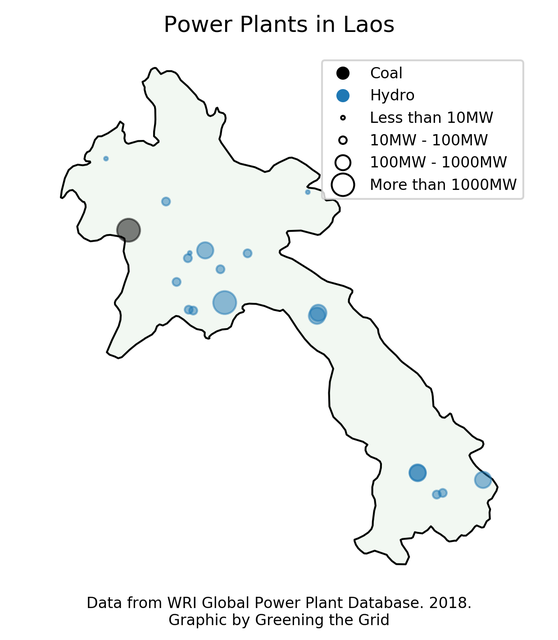Lao PDR
Electric Vehicle Charging Infrastructure
As the government of the Lao People’s Democratic Republic (Lao PDR) seeks to diversify and strengthen its energy mix beyond existing hydropower and fossil fuels, electric vehicle (EV) deployment offers a promising pathway to reduce petroleum reliance.
The Lao PDR is implementing EV goals contained within its forthcoming Clean Energy Transportation Strategy. EVs are being imported for personal use (cars and motorbikes) and commercial use (“tuktuks”). To support this growing demand, NREL and USAID are working with the Lao PDR Ministry of Energy and Mines (MEM) to develop EV charging infrastructure and support private companies that are beginning to explore business models.
While NREL is not directly recommending electric vehicle supply equipment (EVSE) standards, business models, or tariffs, NREL conducted a series of trainings to support MEM decision-making. These trainings cover:
- Business models—motivations for utilities and governments to build EVSE, and key considerations for business model identification.
- Tariff design— business models for tariffs between an EVSE owner and customer, as well as tariffs between the electric utility and an EVSE owner.
- Technical standards— codes (a set of rules recommended for others to follow) and standards (detailed documents that elaborate how to meet a specific code) design, and specific international standards including SAE J1772 and IEC 61851/62196.
Resilience
NREL partnered with USAID's Clean Power Asia program to assess the Lao power sector’s vulnerability to natural, technological, and human-caused threats, and to develop a resilience action plan to address the highest-risk vulnerabilities.
To lead and inform these activities, an advisory group including participants from the Lao Ministry of Mines and Energy (MEM), the state-owned utility (Électricité du Laos or EDL), and the generation company (Électricité du Laos-Generation) was established. The NREL and USAID Clean Power Asia team worked with the advisory group and employed a participatory approach to assess power sector vulnerabilities and address the highest-risk vulnerabilities through effective resilience strategies that:
- Emphasized the unique context of the power sector in Lao PDR
- Relied on extensive stakeholder engagement
- Involved detailed review of the latest scientific research to support a vulnerability assessment
- Drew on international best practices and expert input to develop resilience strategies and an implementation action plan for the Lao PDR.
The resulting vulnerability assessment and resilience action plan will help the Lao PDR withstand, respond to, and recover rapidly from the impacts of hazards, and invest in advanced energy systems.
Domestic Energy Generation
In 2018, NREL, USAID, and the Lao PDR collaborated to produce the Task 2 Report - A GIS-Based Technical Potential Assessment of Domestic Energy Resources for Electricity Generation. This analysis, a part of the larger Energy Alternatives Study for the Lao People's Democratic Republic, explores how domestic and imported renewable energy resources could be developed to complement Lao PDR's existing energy infrastructure.
The Task 2 Report assesses the technical potential of renewable energy and other energy resources and analyzes the cost of electricity generation. The report highlights a broader set of planning priorities, beyond least-cost investment, that include economic, social, and environmental factors. The figure below highlights one of the results from the report: a map of average wind speeds at 100 meters in Lao PDR.
Wind Technical Potential with Exclusions for Protected Areas, Waterbodies, Wetland Areas, Forested Areas, and Areas with Slope > 20 %
The capacity-building workshops, technical consultations, and publications resulting from this year-long study will support the Lao PDR's MEM and other energy stakeholders in their energy sector planning. The five tasks of the Energy Alternatives Study are outlined in the figure below.
Goals and Tasks of the Energy Alternatives Study for the Lao People's Democratic Republic
For more information, read the Task 1 - Assessment of Data Availability to Inform Energy Planning Analyses report, which:
- Summarizes the availability and quality of data that serve as key inputs to energy planning activities
- Informs future investments in energy data collection and management.
The full Task 2 report and the presentation given at the Asia Clean Energy Forum by the Lao Ministry of Energy and Mines are also useful follow-up resources.
Visit the USAID Clean Power Asia Program website to learn more about this and related activities in the region.
The USAID-NREL Partnership is continuing to collaborate with Ministry of Energy and Mines and other Lao power sector actors through support for a vulnerability assessment and a power sector resilience planning activity.
Also visit the USAID Clean Power Asia Program website to learn more about this and related activities in the region.
Power plant map


